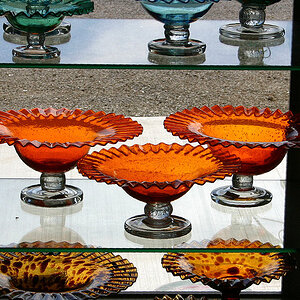cfusionpm
TPF Noob!
- Joined
- Jun 21, 2009
- Messages
- 851
- Reaction score
- 6
- Location
- San Diego, CA
- Can others edit my Photos
- Photos OK to edit
cfusionpm has been grinding the DxO Mark axe for months, simply because his favorite camera tests out so poorly (in the mid-60's). But, as a newcomer, you probably do not really understand who you're relating to,or what their hidden biases are. You sound like a Canon fanboi to me...
chito beach, what Derrel neglects to mention are all the times I would say things like how great the higher end Nikon cameras are. And how much I wish Canon would release a full frame speed/sports camera like the D700 and D3/s. The only reason I'm with Canon is because that's where I'm invested and it doesn't really make sense to switch. Right now, I would absolutely love to have a D700/D7000 combo instead of 7D/50D (or theoretical 7D/5DII). These "hidden biases" are fabrications Derrel likes to make to fluff off and ignore anything I have to say; even when he agrees with me! :thumbup:
This is also a good point. But as this article points out, it takes a difference of 5 full points to make a difference of 1/3 of a stop.I agree that the overall DxO mark number is meaningless. However, the individual measurements that feed in to the overall score (color depth, dynamic range, low light performance) as well as the detailed plots for each measure are meaningful and quite useful.
To quote them:
So very large differences can be useful in evaluating a camera, but it seems more often than not, the differences are so small that the human eye wouldn't even tell a difference. Factor in post production (which is done on pretty much all images, to some degree) and it's even less important. What can be more useful, especially for real world applications, are visual image examples. It's something DxO lacks entirely and has been the point I'd been arguing all along."But eventually I stopped relying on it because I was finding a growing disconnect between the results that I was seeing from some equipment and the numbers being generated by Optics Pro. Eventually I returned to doing subjective reviews, which I have continued ever since. Nevertheless since then quite a few organizations have adopted the DxO Optics Pro testing system, including Popular Photography magazine in the US and Chasseur d'Image in France.
When the company's DxOMark pages first went online last November I was positive about it because I felt that the engineers and scientists at DxO really know their stuff, and that the industry could use an impartial technical yardstick by which to measure digital camera performance.
Since then though I have become increasingly concerned, because their DxOMark metric provides people with a number, precise to within one decimal point, but which has become misunderstood by many.
Firstly, such a level of precision is essentially meaningless. Statisticians call it spurious precision, since it creates an impression of accuracy that isn't at all relevant.
Does a ranking of 62.3 really differ in any meaningful way from 63.8? No, not at all. In fact DxO points out that a measure smaller than 5 is hardly perceptible, representing just a 1/3rd stop difference. "





![[No title]](/data/xfmg/thumbnail/35/35586-d552a369f369a1796256b9df897a8d91.jpg?1619737061)




![[No title]](/data/xfmg/thumbnail/31/31979-ea92aca54ae865842d998c9cec534991.jpg?1619735137)


![[No title]](/data/xfmg/thumbnail/31/31978-02cde49248ebdf1b82fba5c899e08378.jpg?1619735136)
